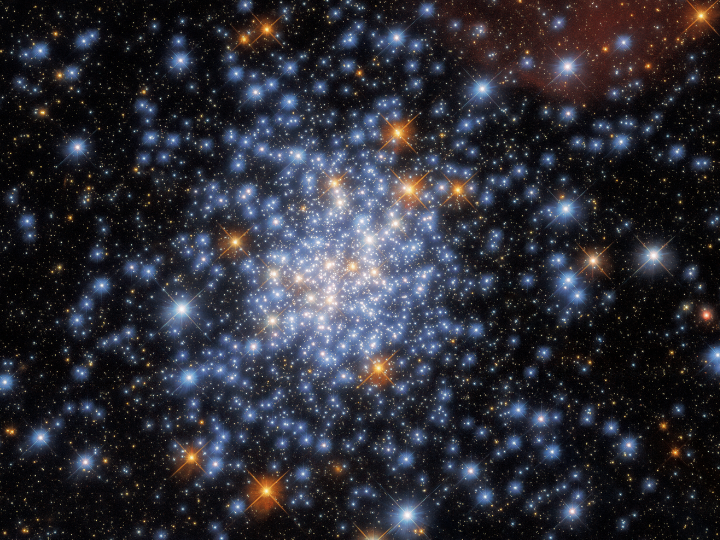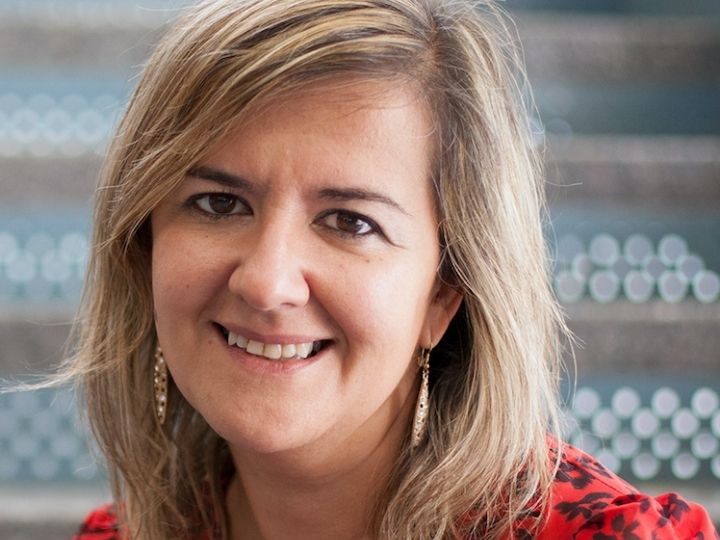University of Houston Joins NP3M Collaboration to Make ‘Real Progress’ in Scientific Knowledge About the Universe

The universe offers mysteries that puzzle even the experts. Among the big questions: What is the core of a neutron star made of? And what happens inside the huge explosion when two neutron stars collide?
“All through the universe, there are once-massive stars that ran out of fuel and collapsed, pulling their protons and neutrons in together so tightly they became neutron stars that are a fraction of their original size,” University of Houston Associate Professor of Physics Claudia Ratti explained.
Except for black holes, these are the densest objects known to astronomers — and are the focus of a five-year collaboration supported by a $3.25 million grant from the National Science Foundation (NSF). The Nuclear Physics from Multi-Messenger Mergers (NP3M) project is led by research teams at five U.S. universities.

“NP3M is a national effort in nuclear physics and astrophysics to probe the properties of hot and dense matter at the core of neutron stars. This unknown matter reaches extremely high temperatures when two neutron stars collide,” said Ratti, the principal investigator of the UH team.
The UH team is joined in the hub by researchers at University of Tennessee-Knoxville (the NP3M collaboration’s lead institution) and teams at Indiana University, Pennsylvania State University and Syracuse University. In addition, 13 senior investigators at other U.S. institutions will contribute, as will scientists in 26 international groups.
Creation of the NP3M hub was prompted by a recent breakthrough that confirmed that neutron stars do, indeed, collide in an event now called a neutron star merger.
“It is a very violent event that produces gravitational waves that can be measured,” Ratti said. “Mergers had been suspected for a long time, but there was no real evidence of them. Then in 2017, the LIGO/Virgo Collaboration observed gravitational waves associated with a binary neutron star merger.” Since then, several projects have attempted to interpret the LIGO data or create models to define what happens inside the collisions.
Gravitational waves are a key player in messenger physics. The field of study is so named because it depends on phenomena that signal the presence of something — in this case, a neutron star merger — that cannot be seen with any current technology. Detection of gravitational waves not only won a Nobel Prize but also gave astrophysicists an additional tool to observe the dense matter inside neutron stars.
“The NSF recognizes this is a very hot topic right now, so they opened a call for a dedicated, focused hub that shares research among several universities. It’s exciting to have the opportunity for weekly talks with colleagues in the hub. And I think it’s very unique possibility for the field to make real progress,” Ratti said.
Each participating team will work from its home institution and within a defined area of expertise, but frequent meetings and exchanges will make for a very lively collaboration. “The University of Houston will be in charge of the more theoretical part of the project. We are experts in fundamental nuclear and high-energy physics, so we will numerically simulate the theory of strong interactions,” Ratti explained.
The hub also will provide an impressive opportunity for participating post-doctoral researchers to work remotely with top experts across several fields at the same time they collaborate in person with their mentors at their home university.
“They will develop not just one set of expertise. They won’t be only nuclear physicists, for example, they will also learn about astrophysics and gravitational wave detection. So they will have a much more complete background and set of expertise at the end of the five years of this focused hub.”
The NP3M project will have community impact, too. Software will be developed and deployed to schoolteachers (from 12th grade all the way to kindergarten), with special outreach to rural schools.
Ratti identifies with science-curious kids, having been one, herself.
“As a child, I had a passion for understanding how things work on a small scale, how they look close up. In high school, I became fascinated with physics because I recognized that it was the one topic that can explain things in the greatest depth. That’s why I became passionate about it,” she said.
“I guess the drive to see things up close grew along with me,” she added. “My current research centers on microscopic understanding of matter at the fundamental level, including how quarks and gluons interact with each other.” Ratti grew up in Asti, a small town in Italy, and studied physics at the University of Torino, where she was working as a group leader before joining the University of Houston.
Ratti and her colleagues hope the NP3M materials will ignite in students the same spark that led every one of them to lifelong fascination with science. Who knows? Maybe their example will inspire a future wave of nuclear and high-energy physicists and astrophysicists who someday will uncover other answers to the mysteries of the universe.
- Sally Strong, University Media Relations